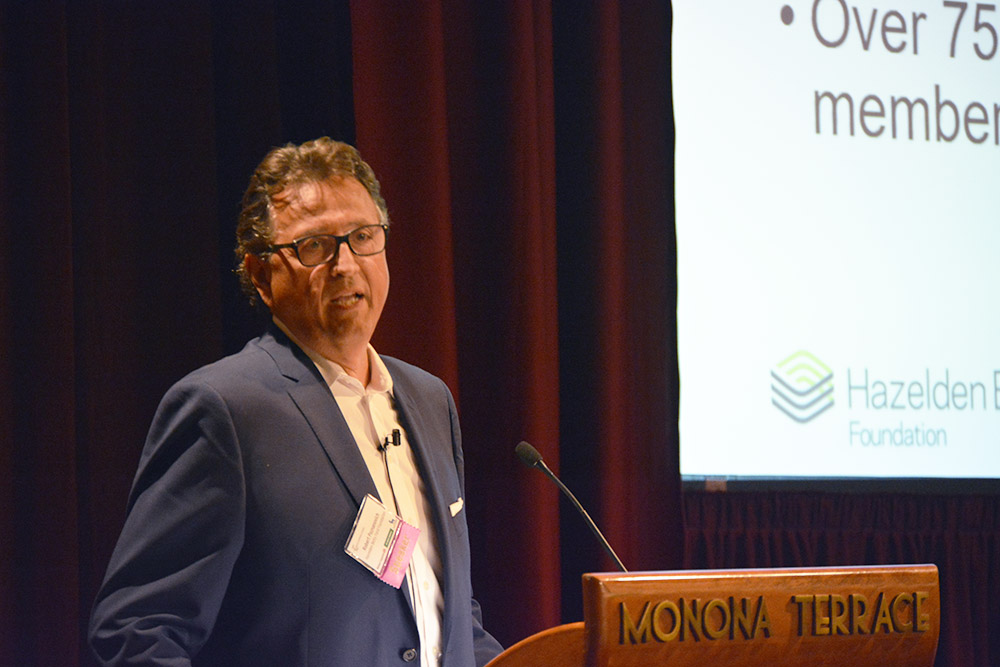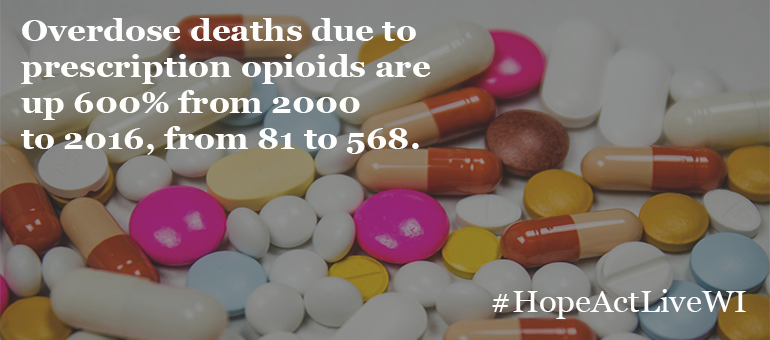
Strategies for Employers to Reduce Stigma and Address Opioid Addiction in the Workplace
Strategies for employers to reduce the stigma and address opioid addiction in the workplace. “How do you talk to someone who is an addict? Use honesty. Don’t overcomplicate this.”
Those were the words of advice from Robert Poznanovich, vice president at Hazelden Betty Ford Foundation. Poznanovich was one of several speakers at The Alliance’s Opioid Epidemic event. The speakers offered strategies for employers to reduce stigma and address opioid addiction in the workplace.
The Opioid Crisis in Wisconsin and Illinois
Nationally, the opioid crisis reached a total cost of one trillion dollars by 2016 and has been escalating ever since. The Midwestern United States, including Wisconsin and Illinois, have been hit particularly hard by the opioid crisis.

However, the Heroin, Opioid, Prevention and Education (HOPE) Agenda has been a bright spark amid this rapidly-spreading health crisis.
Paul Krupski, director of opioid initiatives at the Department of Health Services Wisconsin, pointed out that the HOPE Agenda, spearheaded by Wis. State Rep. John Nygren, focuses on an evidence-based protocol of comprehensive services. This includes medication-assisted treatment, counseling, case management and recovery supports.
An opioid overdose can occur when an individual misunderstands the directions for use, takes an extra dose, or deliberately misuses or abuses a prescription opioid medication or an illegal opioid.
Narcan® (naloxone), is a medication used to reverse the effects of an opioid overdose. It can be given as an intramuscular injection or as a nasal spray. In Wisconsin, select pharmacies can dispense this drug to the public, without a prescription.
Stephanie Vojas, principal at Michael Best Strategies, shared that in 2017 alone, Illinois had over 1,900 fatalities attributed to opioid overdoses. “Illinois is tackling the opioid epidemic at every level of government,” said Vojas.
The Illinois Opioid Action Plan is based on three pillars: Prevention, Treatment & Recovery and Response. The goal of this plan is to reduce opioid-related deaths by 33 percent against estimated deaths within three years.
Narcan (naloxone) recent public acts in Illinois have included the Drug Overdose Prevention Law and Emergency Medical Services Access Act. And in 2015, Illinois required all law enforcement agencies, fire departments and emergency medical service providers to possess naloxone. Many pharmacies in Illinois, including some chains, have a standing order available to dispense naloxone without a prescription.
The Cost of Opioid Addiction in the Workplace
“Nearly one out of three opioid prescriptions subsidized by U.S. employers is being abused,” reported Cheryl Larson, president & CEO at Midwest Business Group on Health (MBGH).
“Addiction affects everyone,” explained Poznanovich. “Almost 70 percent of adult substance abusers work either part or full-time.”
Poznanovich explained to attendees his own personal story of substance use, abuse and addiction. Poznanovich had been a CEO of a Fortune 200 company when he became addicted to alcohol, cocaine and other drugs.
“I didn’t drink. I didn’t take drugs [growing up.] Then, I forgot all of those life lessons I learned, one night at a party,” said Poznanovich. This was his start to becoming a highly-functioning addict. But his work ethic soon declined.
“I was employed. I was showing up. But work was no longer important to me. My addiction was,” said Poznanovich. Today he has been a recovering addict for 23 years.
A manufacturing company with 1,000 employees in Wisconsin or Illinois could be looking at approximately $500,000 in total health care and related costs due to substance abuse. Want to view how much substance abuse could cost your company? Try this cost calculator.
Reduce Stigma of Opioid Addiction, Debunk the Myths
“Let’s reduce stigma,” said Poznanovich. He then debunked two common myths about addiction.
- Addiction is about a lack of willpower. FALSE. Addiction is a disease.
- You need to be ready for treatment. FALSE. Getting treatment is key, but what is most important is your willingness to stay sober after treatment.
Strategies for Employers and their Health Benefits Plans
“I think you should have a strategy to address addiction,” said Poznanovich. He then made these five recommendations to employers.
- Be on the lookout for warning signs of addition (e.g. mood swings, changes in energy level, tardiness, missed days, napping at workstations or in cars and signs of withdrawal.)
- Be extra vigilant if employees work in safety-sensitive positions or with heavy or dangerous machinery.
- Make sure employees take the appropriate time off for medical reasons for surgeries.
- Integrate employees returning from medical leave back into the workplace in a positive manner. Develop a culture that supports recovery for substance abuse.
- Be aware of the laws that protect privacy and confidentiality as well as the Americans with Disabilities Act (ADA).
But when is the best time for employers to address addiction? Poznanovich offered these suggestions as opportunities:
- Perform the same due diligence regarding addiction as you have done with other chronic health care problems.
- Determine when the cost/risk exposures extend far beyond the cost of health care.
- Utilize your existing health and wellness infrastructure and investment in disease management solutions to increase awareness and improve outcomes.
- Educate employees about the dangers of addiction and the harm of abusing illegal drugs and prescription medications.
- Audit your benefit strategy/plan to ensure that addiction treatment is available and accessible with quality in-network treatment providers.
- Develop/update your workplace drug and alcohol and testing policies and educate managers on how to implement it.
Opioid Addiction Treatment Works
“Reduce the stigma of asking questions about your own health benefits policy. Employees are often unsure about who they can trust,” said Poznanovich.
Intervention is key to disrupting the cycle of substance abuse. Treatment works.
In fact, treatment outcomes for substance abuse are equal to or better than other chronic illnesses. Studies have found that after treatment, employees return to work more productive, safer, with less stress, reduced risk and will incur lower future health care costs.
“The bottom line is that we will save lives,” said Poznanovich.
A Point to Ponder
Larson included the following statistic in her presentation.
In a 2017 employer survey conducted by MBGH, 57 percent of the surveyed employers didn’t know if their pharmacy benefit manager (PBM) contract provides coverage for an opioid antidote such as Naloxone.
What if an employee asks you tomorrow if your health benefits cover naloxone … how will you answer?
“We can all learn from each other,” advised Larson. “All stakeholders need to work together on this.”







